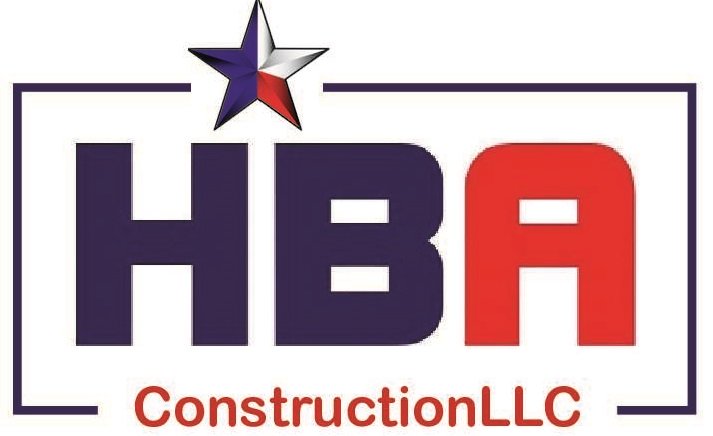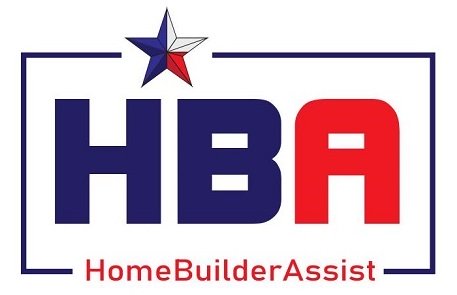Staking Property Lines
Why is this Important?
Staking property lines BEFORE you begin any construction project, or at least finding them, has several benefits. Let's go over some basics.
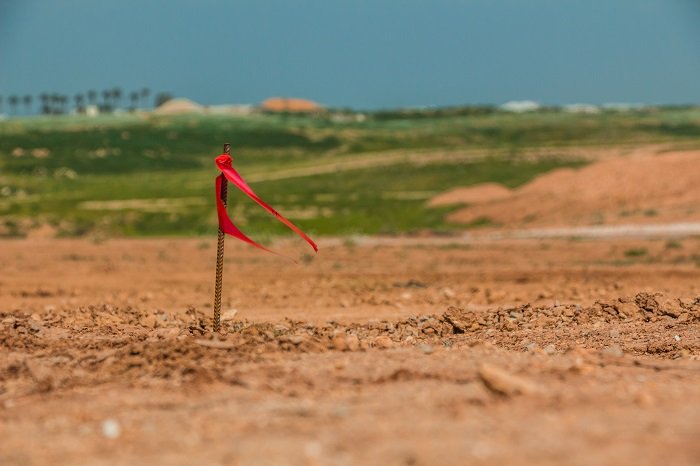
What are Property Lines?
Property lines, sometimes refereed to as lot lines, are simply the exact outer edges of your property. A surveyor, if hired, will put a metal rod, usually rebar, in the ground at the intersection of every corner and often will cap them. These steel property corners, also called property pins, are installed so they can be found in the future with a metal detector. The caps come in many colors and most are made of plastic.
Staking Property Lines
To find your property line, first find the corner property pins. Start looking for the corners and their pins by getting a copy of your plot plan or topo map. This will give you an idea of how far from the road your back corners are. Once you believe you are within a couple feet, turn on the metal detector. Once found, place a wooden stake in the ground close to the pin and run a string or wire to the stake at the next corner. This will give you a clear visual of your property line.
When you cannot see one corner to the next, it may be necessary to have intermittent stakes in order to reach the next pin. When the line of sight is blocked by terrain or vegetation, additional pins along the lot line will be helpful to be able to determine the actual property line.
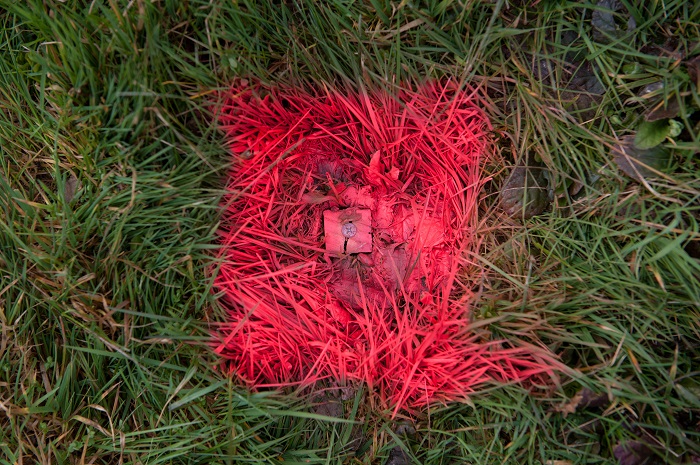
This example shows a hub. A hub is a type of surveying stake that has a nail put in them for accuracy. This may be what your lot has and not the typical rebar.
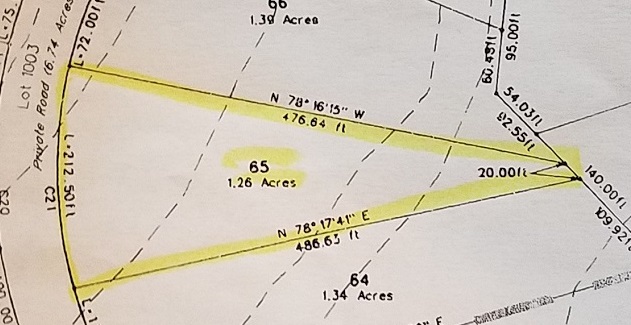
The back two corners of my lot in Spring Branch are only 20 feet apart. I knew my lot was pie shaped, but the topographical map gave me the exact length in which to look. It was extremely helpful.
The Blaine City Hall of Blaine, Minnesota made a simple, yet useful video showing you what I described above.
Additional Owner-Builder Tip
Borrow the steel rebar idea to mark other locations you will want to find in the future. For example, you want to run a PVC conduit under your driveway for an irrigation line in a couple years. Go ahead and tape a piece of steel to the PVC just below the ground. Then bury the capped PVC to keep it out of sight. When you get the money to finance the electrical line, you can now quite easily find the conduit with a metal detector. If your retired neighbor is out for the weekend at the beach using his, simply rent a metal detector by the hour at most rental centers.
Reasons for Staking Property Lines
Disputes

Robert Frost once said, "Good Fences Make Good Neighbors." But if your neighbors fence ends up on your land, then trouble could ensue. One could preempt this type of dispute by having a clear understanding of where the lot lines exist. Have the them drawn up and give a copy to all your neighbors, as a friendly gesture.
Security
If you don't want the wild folk, either human or animal, wandering onto your property, then create a barrier. It doesn't have to be a fence, as Robert Frost suggests; it could simply be a thick hedge. Keep in mind that sometimes height is an issue. Check with your county or HOA (Homeowners Association) to determine if any rules apply. As an added bonus, a fence or hedge would offer a bit of privacy as well.
Optimal Usage
Let's say you are a gardener. You like growing your own vegetables. If you knew exactly where your lot ended, you could potential pick up a couple more rows in your summer vegetable garden. Or on the reverse, you don't accidentally plant a fruit tree on your neighbors side.
Property Value
Last, but certainly not least, staking property lines will ensure you are getting the full value for your lot size when selling. A simple mistake of a foot off all around can make a difference in overall acreage.
